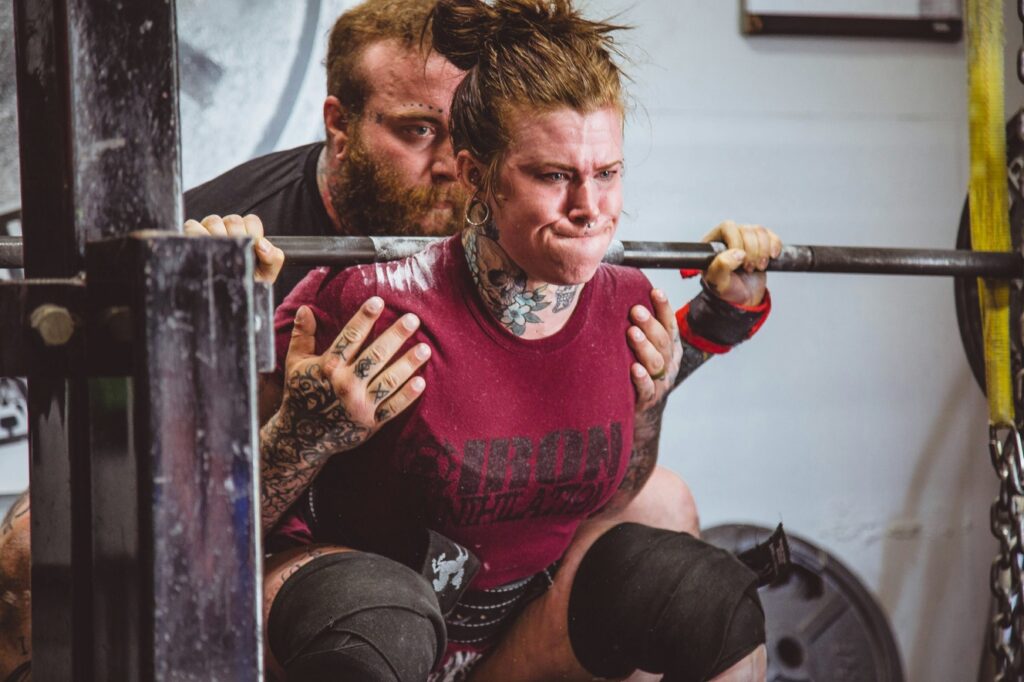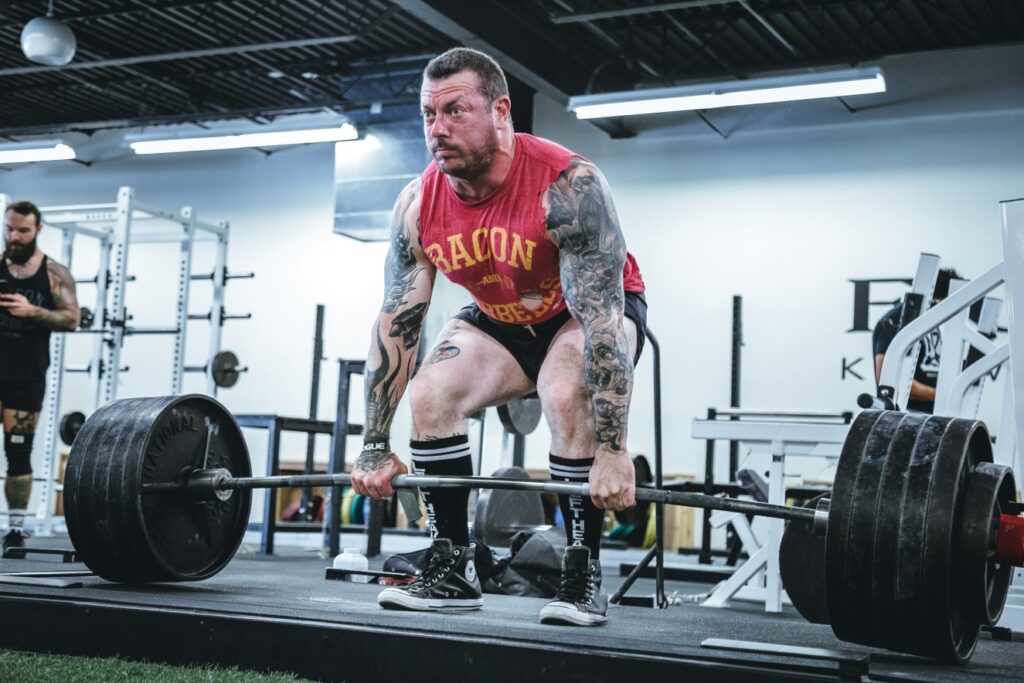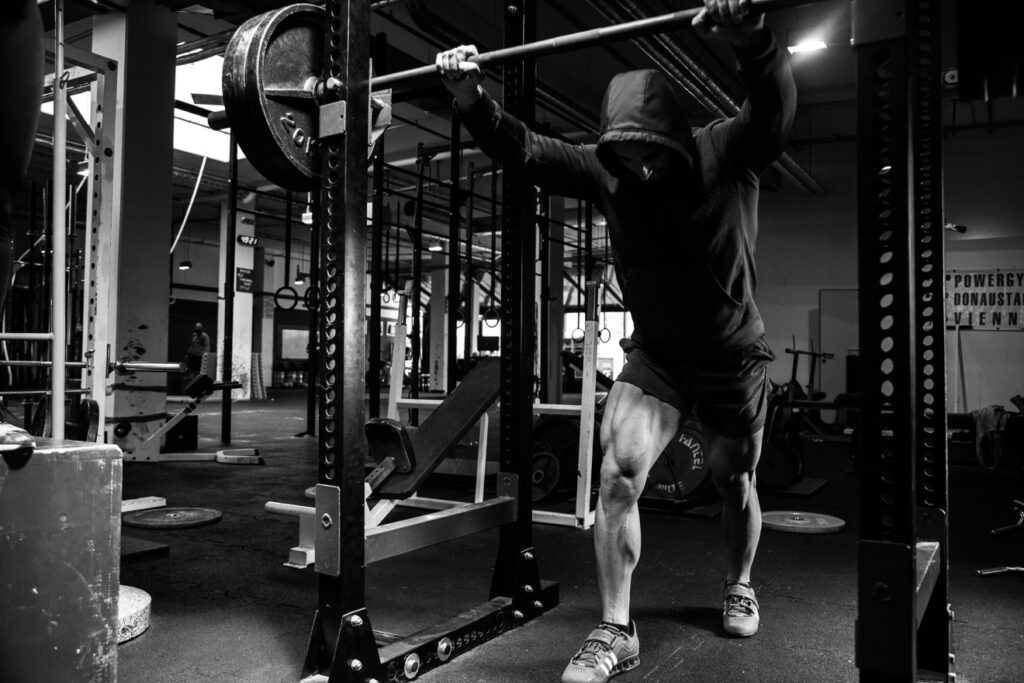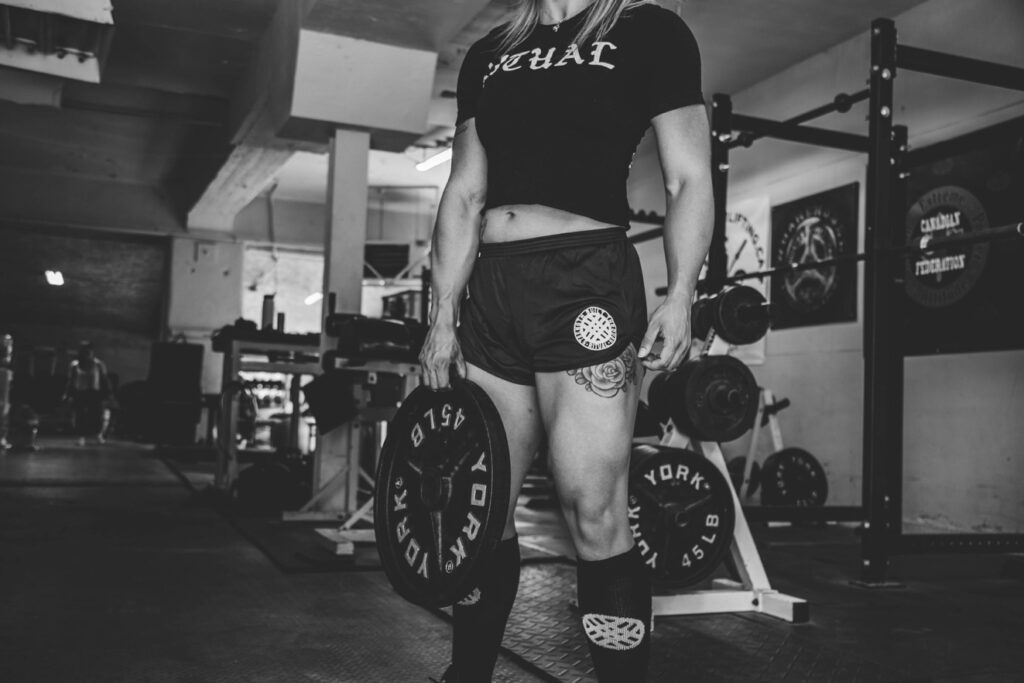When designing a strength training program, there are several training variables which are manipulated, for e.g. rep range, exercise selection, load, volume, time under tension, frequency, intensity etc.
Just like different variables used in strength training, one of the most crucial and often debated one is “Rest between Sets” or “Rest Intervals”. Rest between sets is crucial not just for muscular recovery, but also to counter neuromuscular fatigue.
During exercise, there is an accumulation of metabolites, like lactate, hydrogen ions (H+) and inorganic phosphate. Most of the lactate produced during exercise is broken down by skeletal muscles working at a lower intensity and then distributed in the blood in the recovery phase of exercise.
The duration of rest must be sufficient to allow for replenishment of adenosine triphosphate and phosphocreatine, and for the removal of accumulated lactic acid and other waste products.
Failing to take sufficient rest, will compromise the ability to sustain repeated high-force muscular contractions and may be suboptimal when training for muscular strength.
3 types of rest intervals are the most frequently used in strength training:
- Short Rest Intervals: <60sec
- Moderate Rest Intervals: 60-120sec
- Long Rest Intervals: >120sec (app. 2-5min)
Studies have suggested that, intervals equal to or less than 1 min limit the recovery of creatine phosphate (CP) and ATP (Adenosine Triphosphate) reserves. It is estimated that the total recovery of ATP lasts, on average, from 3 to 5 min after strenuous exercise, while the CP for total recovery needs, on average, 8 min.
Another important factor that can influence recovery between sets is the increase in lactate levels during intense strength training. The time required to decrease lactate after strength training performed at high intensity should be between 4 and 10 min; times shorter than the aforementioned range lead to a high concentration of hydrogen ions (H+), decreasing the intracellular pH, resulting in muscle fatigue.
The recommendations of the American College of Sports Medicine (ACMS), involve times between 2 to 3 minutes in multiarticular exercises and between 1 to 2 minutes for monoarticular exercises.
- A 2007 study, examined the effects of different rest intervals between sets on the training volume completed during a workout, eleven male bodybuilders served as subjects. All of the subjects performed a minimum of 3 strength workouts per week for a period of 2 years. During each testing session, exercises were performed with a 1, 2, or 5- minute rest interval between the sets.
The 5-minute rest between sets resulted in the highest training volume completed for all exercises, with the 2- and 1- minute rest conditions following in descending order, when athletes trained with an 85% of 1RM load.
2. A 2008 study, compared the squat strength gains and volume components when resting 2 minutes vs. 4 minutes between 1RM Squat sets. 15 trained men were assigned to either a 2-minute or a 4-minute rest interval group. Each group performed the same training program, with the only difference being the length of the rest interval between sets.
Both groups demonstrated large strength gains; however, these differences were not significant between groups. But the 4-minute group demonstrated significantly higher total volumes for the Heavy workouts.

3. A 2009 review of 35 studies, analysed the rest interval between sets for targeting specific training outcomes (e.g. absolute muscular strength, endurance, hypertrophy and muscular power).
Study showed that:
- When training with loads between 50% and 90% of one repetition maximum, 3-5 minutes’ rest between sets allowed for greater repetitions over multiple sets. Resting 3-5 minutes between sets produced greater increases in absolute strength, due to higher intensities and volumes of training.
- Similarly, higher levels of muscular power were demonstrated over multiple sets with 3 or 5 minutes versus 1 minute of rest between sets.
- When the training goal is muscular hypertrophy, the combination of moderate-intensity sets with short rest intervals of 30-60 seconds might be most effective due to greater acute levels of growth hormone during such workouts.
- Training with short rest intervals (e.g. 20 seconds to 1 minute) demonstrated the benefits of utilizing short rest intervals for gains in muscular endurance.
4. A 2016 study, determined the acute muscle anabolic response to resistance exercise performed with short or long inter-set rest intervals. In this study, 16 males completed four sets of leg-press and knee-extension exercise at 75% of 1RM to momentary muscular failure, followed by ingestion of 25g of whey protein. Resistance exercise sets were interspersed by 1 min or 5 min of passive rest.
In the early part of recovery, the increase in MPS from resting levels was two-fold greater in those with longer rest periods. They saw a 152% increase, versus 76% increase in those with short rest intervals.
Researchers suggested that, with short rests of one minute, though the hormonal response is superior, the actual muscle response is blunted. If you’re looking for maximised muscle growth with your training programme, a slightly longer interval between sets may provide a better chance of having the muscle response you’re looking for. Novices starting out on weight training programs should take sufficient rest, of at least 2-3 minutes, between weight lifting sets.
Further researchers added that, over time, they may need to find ways to push beyond the plateau of muscle building that commonly occurs, and so may gradually decrease their rest periods. For experienced lifters, it’s possible that they may not experience the same blunted muscle building response to short rest intervals, particularly if they have trained this way for a prolonged period and adapted to this unique metabolic stress. Nonetheless, similar recommendations of 2-3 minutes between sets should help to ensure maximal muscle growth in well trained individuals.

5. A 2015 study, compared different rest intervals between sets on repetition consistency and ratings of perceived exertion (RPE) during consecutive bench press sets with an absolute 3RM (3 repetition maximum) load. Sixteen trained men attended 4 sessions during which 5 consecutive sets of the bench press were performed with an absolute 3RM load and 1, 2, 3, or 5 minutes of rest interval between sets.
The results indicated that significantly greater bench press repetitions were completed with 2, 3, and 5 minutes vs. 1-minute rest between sets; no significant differences were noted between the 2, 3, and 5 minutes rest conditions.
These findings indicate that when utilizing an absolute 3RM load for the bench press, practitioners may prescribe a time-efficient minimum of 2 minutes rest between sets without significant impairments in repetition performance. However, lower perceived exertion levels may necessitate prescription of a minimum of 3 minutes rest between sets.
6. Another 2016 study, investigated the effects of short rest intervals normally associated with hypertrophy-type training versus long rest intervals traditionally used in strength type training on muscular adaptations in a cohort of young, experienced lifters. 21 young resistance-trained men were assigned to either a group that performed a resistance training (RT) program with 1-minute rest intervals (SHORT) or a group that employed 3-minute rest intervals (LONG).
The study period lasted 8 weeks with subjects performing 3 total body workouts a week comprised 3 sets of 8–12 repetition maximum (RM) of 7 different exercises per session. Testing was performed pre study and post study for muscle strength (1RM bench press and back squat), muscle endurance (50% 1RM bench press to failure).
The study showed several findings:
- There was a clear benefit to longer rest intervals from a strength standpoint. Both 1RM Squat and 1RM Bench were significantly greater for LONG compared to SHORT, and effect sizes were at least double that in favour of the longer rest condition for these measures.
- Longer rest periods had a greater impact on hypertrophic outcomes. Muscle thickness was significantly greater for LONG compared to SHORT, and the effect size differences imply that these differences were meaningful.
- Both groups saw significant increases in local upper body muscle endurance with no significant differences noted between groups.

7. A 2017 systematic review of 23 studies comprising a total of 491 participants (413 males and 78 females), found that, investigated the effects of rest interval duration during resistance training on muscular strength development.
The study showed that:
- Robust gains in muscular strength can be achieved even with short rest intervals (<60s).
- Longer duration rest intervals (>2 min) are required to maximize strength gains in resistance-trained individuals. In certain cases, the use of longer duration rest intervals may be of a greater benefit as opposed to a short to moderate rest intervals duration; for instance, when a multi-joint exercise is performed and/or when a set results in a greater fatigue and is carried out for higher repetitions.
- With regard to untrained individuals, it seems that short to moderate rest intervals (60–120s) are sufficient for maximizing muscular strength gains.
- Responses in resistance training may vary between individuals. Therefore, the resistance training program needs to be tailored in an individualized manner.
- Trained individuals could auto-regulate their rest interval duration based on their psychological and physiological readiness, rather than adhering to a predetermined rest interval duration.
8. A 2017 study, compared the effect of three distinct rest period lengths between sets of upper body single-joint exercise with different load zones and volume designed for either endurance or hypertrophy (50% or 80% of 1-RM), in 16 men.
The shorter 1 minute rest promoted a significant reduction in the total repetition number compared to 3 minute rest for both workloads. In conclusion, for heavier loads (80%) to fatigue, longer rest of 3 to 5 minutes seems to allow for better recovery between sets and thus, promotes a greater volume.
However, when training with lighter loads (50%), the magnitude of the rest seems to directly affect the performance of subsequent sets, and also presents a correlation with total volume achieved for the upper body single-joint exercise scheme.
9. A 2018 study, observed the ideal recovery time between sets and exercises, for both chest and back. Sixty young men recreationally trained in strength training (ST) were divided into 2 groups. Each group was submitted to 3 experimental sessions, performing an ST sequence with 3 sets of 8 repetition maximum. The experimental sessions differed in rest time between sets performed (60, 90, and 120 seconds).
For both groups in each sequence, significantly higher numbers of repetitions were observed with the rest time of 120 seconds relative to the rest time of 90 seconds, 120 seconds in relation to the rest time of 60 seconds, and in the rest interval of 90 seconds in relation to the rest time of 60 seconds.

10.A 2019 study, evaluated the effects of different rest intervals on maximum repetition performance, perceived exertion, and fatigue index on bench press. Four sessions involved seven bench press sets to concentric failure with the goal of completing the maximum number of repetitions, which included: 1) one-minute rest interval between sets (P1), 2) two-minute rest interval between sets (P2), three-minute rest interval between sets (P3), and five-minute rest interval between sets (P5).
The findings demonstrated that shorter rest periods resulted in fewer reps performed during additional sets, fewer total reps/session, and an increased rate of perceived exertion.
11.A 2020 study, compared the effects of different rest intervals on performance and muscle activation during multi-joint (bent over row) and single-joint (biceps curl) exercises. Fifteen trained men performed both exercises using three protocols; each consisting of three sets with three different rest intervals; i) 60 seconds, ii) 90 seconds and iii) 120 seconds rest interval between sets. Each set was performed with hypertrophy loading (75% of 1RM) until fatigue.
Study showed that, performing bent over row with 120 seconds rest interval inter-set and 90 seconds and 120 seconds rest interval during biceps curl exercise allow participants to produce greater lifting performance while recruiting more motor unit for activating the muscles in every set.
12.A 2021 study investigated the effects of SHORT (1 min) and LONG (3 min) rest intervals (RI) on total volume lifted (TVL), repetition performance, fatigue index (FI), and blood lactate [La] during upper body (chest press) and lower body (leg press) exercise with low-intensity (75% of a 10-RM) in 14 trained female lifters.
The total volume lifted was significantly lesser for Short (1 min) rest intervals as compared to Long (3 min) rest intervals. Fatigue index was much higher in short rest intervals. There wasn’t much difference in blood lactate levels between the two rest intervals. These results suggest that longer RIs are better for female lifters who want to optimize TVL with low-intensity resistance training.
13.A 2022 study, analysed the effects of two rest periods between volume-equated resistance exercise (RE) on inflammatory responses (cytokines and leukocyte) and muscle damage. Ten trained men participated in training sessions consisting of five sets of 10 reps performed at 10-RM on (1) the barbell bench press followed by (2) leg press, with either 1- or 3-min rest between sets and exercises.

They found greater increases triggered by the 1-min rest period in Creatine Kinase (CK), occurring from 12 to 24 h post-exercise compared to the 3-min rest condition. A significant increase in the 1-min rest condition was also observed in the total number of leukocytes, neutrophils, and monocytes. The 1-min rest period also triggered increases compared to baseline in pro-inflammatory cytokines, which were more evident after 6 and 12 h post-exercise.
Thus, a 1-min rest condition in volume-equated resistance exercise promoted greater overall muscle tissue damage with a longer duration of the inflammatory processes compared to a 3-min rest.
Researchers in the study, also suggested that, “in practical terms different rest periods are chosen to allow full (longer interest periods) or incomplete recovery (shorter interest periods) between sets. In the case of longer rest periods, this avoids muscle impairments, with the consequence to counteract load decreases caused by fatigue, which may occur if using interest length shorter than 2 min.
Despite perceived exertion may result increased with lower-rest intervals, a progressive load decrease along with subsequent sets determines a decrease in both total volume and intensity, which could result in lower gains in terms of hypertrophy and strength.”
14.A 2023 study, suggested that, a 1 min rest interval between sets may be sufficient in a strength endurance training protocol when the load intensity is 30% 1RM. However, when the load intensity is 50% 1RM, we suggest that a 2 min rest interval between sets is required for optimal recovery and maintenance of power output.
15.A 2024 systematic review of 5 studies, suggested that, that longer rests could provide greater volumes of training compared to 2 minutes. The study showed that the recovery interval between 3 and 4 minutes is effective between sets for training with high intensities. This applies to trained adults who are already familiar with the methodology.
If we take the conclusion of the above studies and other recommendations, rest intervals between sets, will vary between individuals, and their goals.
Experienced and trained individuals are able to regulate their own rest interval duration based on their psychological and physiological readiness, rather than adhering to a predetermined rest interval duration.
But in general, following recommendations can be adhered to:
- Strength & Power workouts (>85% 1RM, 1-6 Reps) – 3-5 min rest between sets, for higher total volume (more reps & sets), and optimal muscular and neurological recovery. For e.g. weightlifters, powerlifters, throwers etc. This rest interval allows for greatest muscular force production during each subsequent set.
Most of the energy that the body uses during heavier strength & power workouts, comes from the ATP-PC system. The body has a very small reserve of phosphagen and creatine, which lasts about 30 sec, and takes the body app. 3-5 min or more to fully recover.
- Hypertrophy (60-85% 1RM, 6-12 Reps) – 1-3 min rest between sets, both for novices and experienced lifters. For e.g. bodybuilding.
This workout draws its energy from the ATP-PC & the Glycolytic system (the carbohydrate & glycogen stores), which lasts for about 3 min.
- Strength Endurance (40-60% 1RM, 15-20 Reps) – 30-120 sec rest between sets. For e.g. runners, swimmers, cyclists, footballers etc. Shorter rest intervals, forces the body to improve its ability to buffer the accumulating lactate, thereby improving your ability to sustain moderate, near maximal or maximal contractions over a given time period.
This workout, takes energy from the Glycolytic (stored carbs) & Aerobic Metabolism (stored fat).



